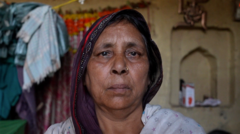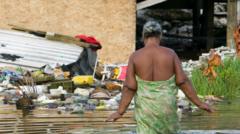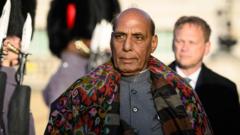With daytime temperatures soaring well above 47 degrees Celsius, citizens of Sri Ganganagar grapple with severe heat waves, endangering lives and livelihoods amid rising humidity across the country.
India’s Extreme Heat: Surviving the Unbearable Temperatures

India’s Extreme Heat: Surviving the Unbearable Temperatures
Residents of one of India's hottest regions face record temperatures and rising humidity.
India is currently experiencing unprecedented heat waves, with regions like Sri Ganganagar, located in the desert state of Rajasthan, reporting temperatures soaring to nearly 50 degrees Celsius (or around 122 degrees Fahrenheit). This alarming trend puts approximately three quarters of the nation’s substantial population of 1.4 billion at risk.
Daily life in this sweltering reality has become a test of resilience, with many residents adapting to extreme conditions that challenge their health and economic stability. The personal accounts from Sri Ganganagar reveal grim choices: for families, staying indoors during the day would mean forgoing work and potentially losing their livelihood. This brutal heat makes air conditioning a distant and impractical dream for the majority, compelling individuals to perform their jobs outside under the merciless sun.
As life continues under such extreme conditions, medical services in the area are stretched thin, leading to concerns about public health. The residents of this region have developed new routines to cope with the heat, further illustrating the ongoing adaptation to climate change impacts. Observers note that rising temperatures seem to have outpaced previous years, and documented willful efforts to survive in a transformed landscape are sorely needed.
Ultimately, this situation highlights the broader effects of climate change, as India navigates the relentless impacts of escalating temperatures that threaten both lives and the economy.
Daily life in this sweltering reality has become a test of resilience, with many residents adapting to extreme conditions that challenge their health and economic stability. The personal accounts from Sri Ganganagar reveal grim choices: for families, staying indoors during the day would mean forgoing work and potentially losing their livelihood. This brutal heat makes air conditioning a distant and impractical dream for the majority, compelling individuals to perform their jobs outside under the merciless sun.
As life continues under such extreme conditions, medical services in the area are stretched thin, leading to concerns about public health. The residents of this region have developed new routines to cope with the heat, further illustrating the ongoing adaptation to climate change impacts. Observers note that rising temperatures seem to have outpaced previous years, and documented willful efforts to survive in a transformed landscape are sorely needed.
Ultimately, this situation highlights the broader effects of climate change, as India navigates the relentless impacts of escalating temperatures that threaten both lives and the economy.




















